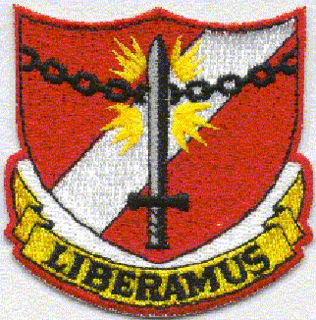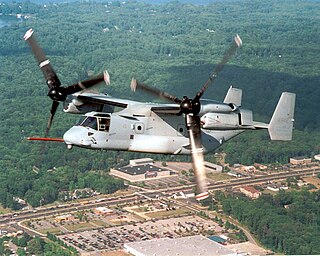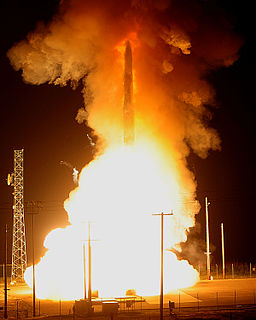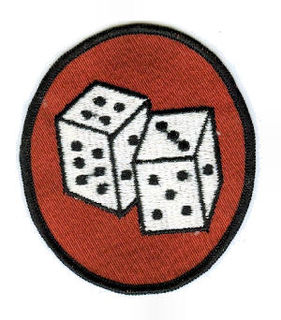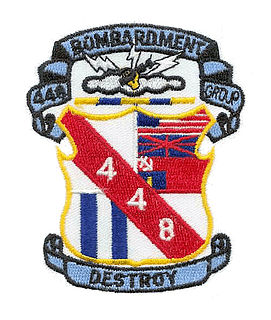542d Combat Sustainment Wing  | |
|---|---|
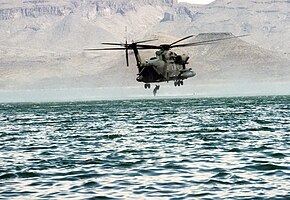 A member of a Navy SEAL team climbs aboard a 1550th Combat Crew Training Wing MH-53J Pave Low III helicopter at Elephant Butte Lake | |
| Active | 1943–1945, 1971–1994, 2005–2010 |
| Country | |
| Branch | |
| Role | Logistics Support |
| Part of | Air Force Materiel Command |
| Engagements | European Theater of World War II |
| Decorations | Air Force Outstanding Unit Award |
| Commanders | |
| Notable commanders | General Hunter Harris, Jr. |
| Insignia | |
| 542d Combat Sustainment Wing emblem (approved 9 June 2005) [1] |  |
| 1550th Combat Crew Training Wing emblem (approved 30 Aug 1972 [note 1] |  |
The 542d Combat Sustainment Wing is an inactive wing of the United States Air Force last stationed at Robins Air Force Base, Georgia. It was inactivated in June 2010.

The United States Air Force (USAF) is the aerial and space warfare service branch of the United States Armed Forces. It is one of the five branches of the United States Armed Forces, and one of the seven American uniformed services. Initially formed as a part of the United States Army on 1 August 1907, the USAF was established as a separate branch of the U.S. Armed Forces on 18 September 1947 with the passing of the National Security Act of 1947. It is the youngest branch of the U.S. Armed Forces, and the fourth in order of precedence. The USAF is the largest and most technologically advanced air force in the world. The Air Force articulates its core missions as air and space superiority, global integrated intelligence, surveillance, and reconnaissance, rapid global mobility, global strike, and command and control.

Robins Air Force Base is a major United States Air Force installation located in Houston County, Georgia, United States. The base is located just east of and adjacent to the city of Warner Robins, 18 mi (29 km) south-southeast of Macon and approximately 100 mi (160 km) south-southeast of Atlanta, Georgia. The base is named in honor of Brig Gen Augustine Warner Robins, the Air Force's "father of logistics".

Georgia is a state in the Southeastern United States. It began as a British colony in 1733, the last and southernmost of the original Thirteen Colonies to be established. Named after King George II of Great Britain, the Province of Georgia covered the area from South Carolina south to Spanish Florida and west to French Louisiana at the Mississippi River. Georgia was the fourth state to ratify the United States Constitution, on January 2, 1788. In 1802–1804, western Georgia was split to the Mississippi Territory, which later split to form Alabama with part of former West Florida in 1819. Georgia declared its secession from the Union on January 19, 1861, and was one of the original seven Confederate states. It was the last state to be restored to the Union, on July 15, 1870. Georgia is the 24th largest and the 8th most populous of the 50 United States. From 2007 to 2008, 14 of Georgia's counties ranked among the nation's 100 fastest-growing, second only to Texas. Georgia is known as the Peach State and the Empire State of the South. Atlanta, the state's capital and most populous city, has been named a global city. Atlanta's metropolitan area contains about 55% of the population of the entire state.
Contents
- History
- World War II
- Crew Training
- Logistics Operations
- Lineage
- Assignments
- Stations
- Components
- Aircraft
- Awards
- References
- Notes
- Citations
- Bibliography
- External links
The wing was first organized in England as the 92d Bombardment Wing, a heavy bombardment headquarters of VIII Bomber Command during World War II and took part in the air offensive against Germany until the surrender of Germany in 1945.

A bomber is a combat aircraft designed to attack ground and naval targets by dropping air-to-ground weaponry, firing torpedoes and bullets, or deploying air-launched cruise missiles.

World War II, also known as the Second World War, was a global war that lasted from 1939 to 1945. The vast majority of the world's countries—including all the great powers—eventually formed two opposing military alliances: the Allies and the Axis. A state of total war emerged, directly involving more than 100 million people from over 30 countries. The major participants threw their entire economic, industrial, and scientific capabilities behind the war effort, blurring the distinction between civilian and military resources. World War II was the deadliest conflict in human history, marked by 50 to 85 million fatalities, most of whom were civilians in the Soviet Union and China. It included massacres, the genocide of the Holocaust, strategic bombing, premeditated death from starvation and disease, and the only use of nuclear weapons in war.
In 1973 Military Airlift Command (MAC) activated the 1550th Aircrew Test and Training Wing at Hill Air Force Base, Utah. The wing trained aircrews for MAC, Air Mobility Command and Air Education and Training Command from 1971 to 1994 for search and rescue and special operations missions. In 1991 the wing was renumbered and consolidated with the 92d Bombardment Wing as the 542d Crew Training Wing. It was inactivated in 1994 and its mission, personnel and equipment transferred to the 58th Special Operations Wing, which was simultaneously activated.
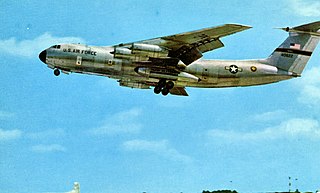
The Military Airlift Command (MAC) is an inactive United States Air Force major command (MAJCOM) that was headquartered at Scott Air Force Base, Illinois. Established on 1 January 1966, MAC was the primary strategic airlift organization of the Air Force until 1974, when Air Force tactical airlift units in the Tactical Air Command (TAC) were merged into MAC to create a unified airlift organization.

Hill Air Force Base is a major U.S. Air Force base located in northern Utah, just south of the city of Ogden, and near the towns of Clearfield, Riverdale, Roy, Sunset, and Layton. It is about 30 miles (48 km) north of Salt Lake City. The base was named in honor of Major Ployer Peter Hill of the U.S. Army Air Corps, who died test-flying a prototype of the B-17 Flying Fortress bomber. In this decade Hill AFB is still the sixth-largest employer in the state of Utah, and the third-largest one excluding the State Government and Higher Education employers. Hill AFB is the home of the Air Force Materiel Command's (AFMC) Ogden Air Logistics Complex which is the worldwide manager for a wide range of aircraft, engines, missiles, software, avionics, and accessories components. The commander of the Air Logistics Complex is Brigadier General H. Brent Baker Sr. The Ogden Air Logistics Complex is part of the Air Force Sustainment Center.

Air Mobility Command (AMC) is a Major Command (MAJCOM) of the U.S. Air Force. It is headquartered at Scott Air Force Base, Illinois, east of St. Louis, Missouri.
The wing was redesignated the 542d Combat Sustainment Wing in 2005 and activated as a logistics support organization s part of the Air Force Materiel Command Transformation project.









